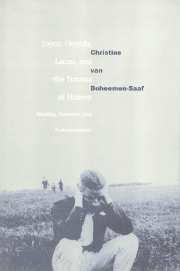Book contents
- Frontmatter
- Contents
- Acknowledgments
- List of abbreviations
- Chapter 1 The stolen birthright: the mimesis of original loss
- Chapter 2 Representation in a postcolonial symbolic
- Chapter 3 The language of the outlaw
- Chapter 4 The primitive scene of representation: writing gender
- Chapter 5 Materiality in Derrida, Lacan, and Joyce's embodied text
- Conclusion: Joyce's anamorphic mirror
- Bibliography
- Index
Chapter 5 - Materiality in Derrida, Lacan, and Joyce's embodied text
Published online by Cambridge University Press: 22 September 2009
- Frontmatter
- Contents
- Acknowledgments
- List of abbreviations
- Chapter 1 The stolen birthright: the mimesis of original loss
- Chapter 2 Representation in a postcolonial symbolic
- Chapter 3 The language of the outlaw
- Chapter 4 The primitive scene of representation: writing gender
- Chapter 5 Materiality in Derrida, Lacan, and Joyce's embodied text
- Conclusion: Joyce's anamorphic mirror
- Bibliography
- Index
Summary
It must be supposed that after the parricide a considerable time elapsed during which the brothers disputed with one another for their father's heritage, which each of them wanted for himself alone.
Freud, Moses and Monotheism.Poussin's well-known painting Et in Arcadia Ego shows us the surprise discovery of death in a landscape of seeming eternal spring. A kneeling figure traces the writing on a tomb, and spells out the letters which symbolize its meaning to his companions. The question Poussin's representation brings into this inquiry is not just the reminder of our mortality, but the relation between representation (writing or reading) and death/castration. As the reading figure traces the letters, his arm throws a shadow on the tomb which takes the form of the traditional symbol of the scythe which cuts human life. Thus the very act of reading — and by extension the act of writing — itself brings the shadow which denies the permanence we traditionally attribute to the medium: ars longa vita brevis.
Joyce's strategy of encrypting the discursive trauma, which, as I argued in the previous chapter constitutes his (post)modernity, may be understood as writing's perverse attempt to overcome the shadow thrown by the writing or reading hand. It is, however, also that strategy which lends the shadow uncanny, concrete materiality. As always, Joyce's strategy is ambivalently double.
- Type
- Chapter
- Information
- Joyce, Derrida, Lacan and the Trauma of HistoryReading, Narrative, and Postcolonialism, pp. 155 - 193Publisher: Cambridge University PressPrint publication year: 1999



